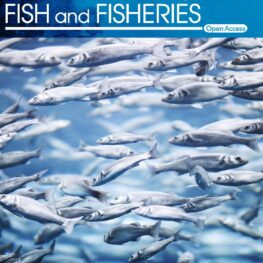Categories
Fisheries Publications 2021Assessment of fibroblast growth factor 23, antioxidant enzymes activities and heavy metals in Oreochromis niloticus and Clarias gariepinus
Soha M. Hamdy, Fatma Adel Yahia and Abdelrahman Said Talab1*
Fisheries Division – Fish Processing and Technology Lab (NIOF)
Egyptian Journal of Aquatic Biology & Fisheries, 25(5): 173 – 188 (2021)
(Indexed in Scopus)
Abstract:
The aim of this study was to assess the fibroblast growth factor (FGF23) hormone, chemical composition, antioxidant enzymes activities, biochemical parameters and heavy metals concentration in Oreochromis niloticus and Clarias gariepinus collected from the River Nile, Rosetta branch during 2019. Fifty samples from O. niloticus and C. gariepinus were collected from (I) at El-Qanater El-Khyria, (II) after El-Rahawy Drain, (III) at Kom Hamada city, and (IV) at Kafr El-Zayat city. Serum levels of FGF23, glucose, total protein, albumin, urea, and creatinine were assessed. Tissue levels of Fe, Zn, Cu, Mn, and Cd, the activities of superoxide dismutase (SOD), catalase (CAT) and glutathione S-transferase (GST), the values of malondialdehyde (MDA), moisture, protein, lipid, and ash were also assessed. The results showed significant difference (P<0.05) in the levels of FGF23, glucose, total protein, albumin, urea and creatinine in serum and the activities of superoxide dismutase (SOD), catalase (CAT) glutathione S-transferase (GST), and malondialdehyde (MDA) in the tissue of O. niloticus and C. gariepinus from studied stations of Rosetta branch as compared with control site (I). Metal accumulation in different tissues of the studied fish samples was found to be in the following order: Fe > Zn > Mn > Cu > Cd in muscles and gills. The mean values of moisture, protein, lipid, and ash were 80.16, 17.18, 1.23, and 1.14% for O. niloticus and 78.66, 18.16, 1.61, and 1.18% for C. gariepinus, respectively. All data indicated that the environmental condition seriously affected the fish quality. Thus, the FGF-23 assay can be used in prospective trials to valid its utility as a biomarker of environmental pollution.
Keywords: FGF23 hormone, Chemical composition, Oreochromis niloticus, Clarias gariepinus, Antioxidant enzymes
Corresponding author e-mail: [email protected]






